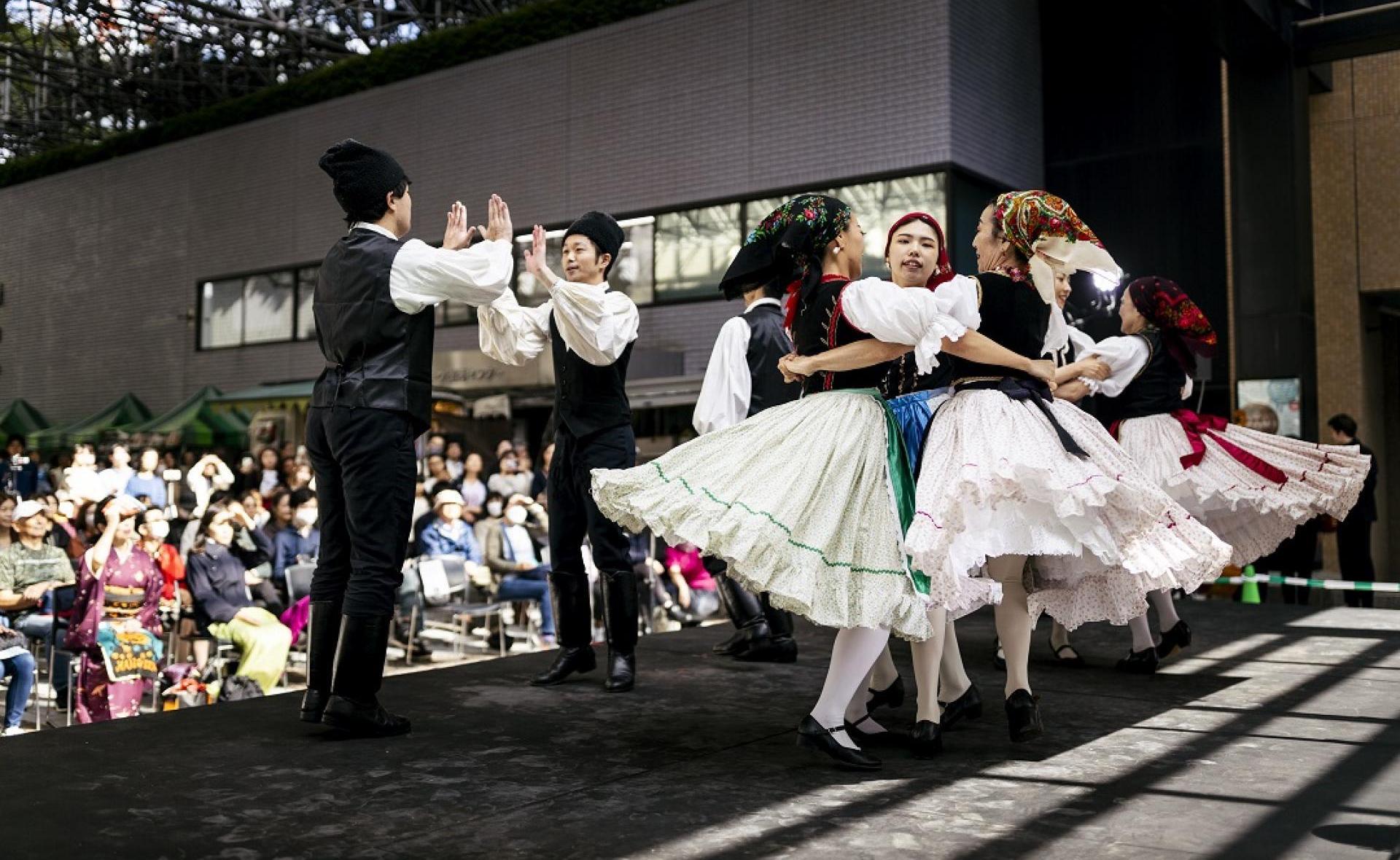
Magyar fesztivál
The 4th Hungarian Festival in the heart of the Japanese capital on 21 October 2023. organised by the Liszt Institute Tokyo which was a great success. The huge open-air event featured a full-day stage programme and a gastronomic fair. In addition to folk dancers, folk musicians, singers and storytellers from Hungary, the Japanese audience was able to welcome Hungarian classical music artists, singers and dance groups from Japan. The 10th anniversary of the Stipendium Hungaricum scholarship was celebrated and the Veszprém-Balaton 2023 European Capital of Culture programme was presented.
The Tokyo Hungarian Festival was first organised in late autumn 2019, with only three groups performing and online due to the COVID epidemic. From 2020, the colourful programme will be organised in the Ark Hills Karajan Square in downtown Tokyo, covering almost 1,000 square metres. This year, the stage show was a success with 14 programmes and more than 100 performers. The festival was opened by the Interim Managing Director, Tibor Csaba Szendrei, and Krisztina Merényi, the new Director of the Tokyo Liszt Institute, was also introduced.
Among the performers, the Japanese audience welcomed folk dance teacher Mihály Timár (leader of the Timár Ensemble), folk dancers Sára and Gergely Timár (Csillagszemű Ensemble) and the Ritka Orchestra. The event featured performances by well-known classical musicians in Japan such as Kaneko Mijuji, István Kohán and operetta singer Máté Kamarás. Former Stipendium Hungaricum music scholarship holders Kawamoto Arashi and Kawamoto Mai enhanced the high quality of the event. The Fény children's choir was a great success, and students from the Hungarian School of Tokyo made their debut. For the enterprising, there was also the opportunity to take part in a half-hour beginners' Hungarian language course. A fashion show was held in conjunction with the Liszt Institute's temporary exhibition, the Folk Costume Reconsidered, where the use of Hungarian folk art motifs on modern clothes was demonstrated. The presenter was a well-known celebrity in Japan, Kōichi Sugiyama.
Families with children were treated to a play house and a full-day craft programme led by Kitti Csőke, a Hungarian-Japanese storybook author from Debrecen. And at the tables of the Speedcubing Hungary Association, Rubik's Cube fans could test their speed.
Veszprém-Balaton 2023 European Capital of Culture was also presented at the event. The pictures of Gábor Erdélyi, a photographer of Veszprém origin, were exhibited and the Hungarian-designed TEREMTec virtual exhibition space was presented, where visitors could enter to see a virtual model of the downtown of Veszprém and pictures of the Balaton region by Csaba Toroczkai.
In addition to the stage programmes, 10 stands and 2 mobile buffets offered Hungarian products.
Among the exhibiting companies were Iroiro, Mitsui Trading House, Suzuki Car Dealership, Hokuto Company, Bar Palinka, Natur Buffet, Blue Wings, Hungarian Food Supply Company, Kürtös Bee and Hungarian Wine Shop Pince.
The event was covered by one national and one regional TV programme and more than 70 print and digital media outlets. The festival was attended by thousands of visitors.
The Hungarian Festival was supported by the Liszt Institute of Tokyo, the National Cultural Fund, the Stipendium Hungaricum Department of the Ministry of Foreign Affairs and Trade, the Hungarian Academy of Arts and several Japanese sponsors.
